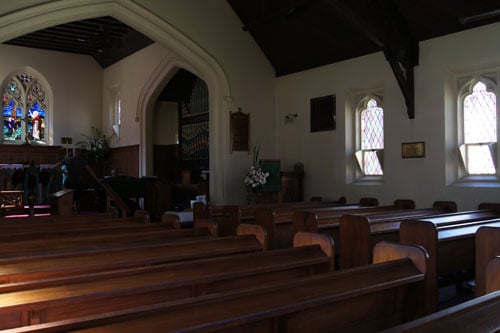Sony Alpha SLT-A33
-
-
Written by Gordon Laing
Quality
Sony Alpha SLT-A33 vs Canon EOS 550D / Rebel T2i Real-life resolution (default settings)
Sony Alpha SLT-A33 results : Real-life resolution / High ISO Noise / Handheld Twilight (HHT) / Multi-frame NR / HDR
Sony Alpha SLT-A33: JPEG versus RAW
| We photographed the scene above using the SLT-A33’s RAW plus Large Fine JPEG mode, allowing us to directly compare images created from exactly the same data. Below are crops taken from the original JPEG file alongside the RAW version, processed in the supplied Image Data Converter SR 3.2 using the default settings.Judging from the crops below, there’s not much to choose between the in-camera JPEG and the RAW file processed with Image Data Converter using the default settings. The crops look almost identical, with only very subtle differences in sharpness and saturation. Of course tweaking the settings may deliver superior results, and shooting in RAW gives you greater flexibility when it comes to retrieving highlight detail and adjusting White Balance, but it’s reassuring to find the in-camera JPEG engine of the SLT-A33 delivering such good results. We’re now going to delve into low light performance, starting with our Sony A33 High ISO Noise comparison. |
Sony Alpha SLT-A33 (JPEG using in-camera defaults) with Sony SAL1855 SAM | Sony Alpha SLT-A33 (RAW Image Data Converter) with Sony SAL1855 SAM | |
 |  | |
f8, 100 ISO | f8, 100 ISO | |
 |  | |
f8, 100 ISO | f8, 100 ISO | |
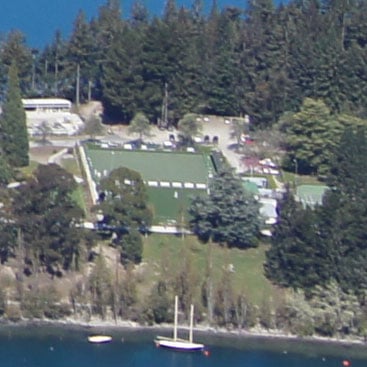 |  | |
f8, 100 ISO | f8, 100 ISO | |
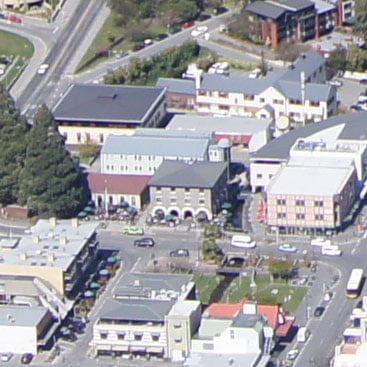 | 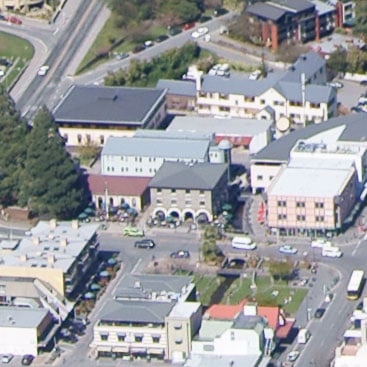 | |
f8, 100 ISO | f8, 100 ISO |
Sony Alpha SLT-A33 results : Real-life resolution / High ISO Noise / Handheld Twilight (HHT) / Multi-frame NR / HDR
|
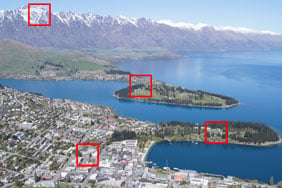 | To compare real-life performance we shot the same scene with the Sony Alpha SLT-A33 and the Canon EOS 550D / T2i within a few moments of each other using their best quality JPEG settings and base sensitivities.Each camera was fitted with its respective kit lens: the A33 with the SAL1855 SAM and the 550D / T2i with the EF-S 18-55mm IS. Each lens was set to f8 in Aperture Priority and adjusted to deliver the same field of view. |
The image above was taken with the Sony Alpha SLT-A33 at 100 ISO with an exposure of 1/320 and the lens set to 24mm f8; the original Large Fine JPEG measured 6.56MB. The Canon EOS 550D / T2i metered 1/250 at f8 / 100 ISO for the same scene moments later, but we took an additional shot at 1/320 / f8 / 100 ISO to see which was the closest match to the Sony in terms of brightness. The matching exposure turned out to be a little darker than the original A33 image, while the 1/250 version was almost identical. This implies the A33 is approximately 0.25 to 0.33EV more sensitive than the EOS 550D / T2i when both were set to 100 ISO.
The crops below are taken from the areas marked with the red squares and presented here at 100%. The crops from the EOS 550D / T2i show a smaller area due to its higher resolution: 18 Megapixels versus 14.2 on the Sony.
Looking at the numbers you’d assume the four extra Megapixels of the Canon EOS 550D / T2i would give it a significant advantage in terms of real-life detail, at least at the lowest sensitivity. Judging from the crops below though, that’s clearly not the case. The higher resolution Canon image has certainly delivered smaller areas in the crops, but there’s no perceptible advantage in resolved fine detail. Indeed in some of the crops, the Canon images appear noticeably softer than those from the Sony.
The problem here is not the Canon’s sensor, but the EF-S 18-55mm IS kit lens, which just isn’t resolving sufficient detail to exploit the high resolution behind it. Worse, this lens exhibits softness and fringing towards the corners, which is apparent in the first and fourth crops, where the quality falls below that of the Sony. Fit any of the Canon 18 Megapixel bodies with a higher quality lens and it’s a different story. For example, go for the EF-S 15-85mm IS USM or EF 24-105mm IS USM and you’ll find the sensor resolving finer details, while better avoiding the corner softening seen here.
Revealingly though, we don’t have to make any such excuses for the Sony. Sure there’s better lenses in the Alpha range, but we like to test budget and mid-range DSLRs with the lenses they’re most likely to be sold with, and that means the basic kit models. In this scenario, the SLT-A33 delivers sharp and detailed results which match the Canon EOS 550D / T2i 18-55mm kit in the middle of the frame and exceed it towards the corners.
It’s a valuable lesson that Megapixels don’t tell the whole story when it comes to quality. Give the Canon 18 Megapixel bodies a decent lens (as you can see in our EOS 60D and EOS 7D reviews) and they will resolve lots of detail, but fit them with the EF-S 18-55mm IS kit lens and you should expect results closer to a 14 Megapixel model. So the surprise result here is the Sony SLT-A33 kit matches and in some respects out-performs the EOS 550D / T2i kit at 100 ISO, when both are fitted with their respective 18-55mm lenses.
Scroll down to see if there’s any benefit to shooting in RAW with the A33, or skip straight to our low-light results, which start with a High ISO Noise comparison, again against the EOS 550D / T2i.
Sony Alpha SLT-A33 (JPEG using in-camera defaults) with Sony SAL1855 SAM | Canon EOS 550D / T2i (JPEG using in-camera defaults) with Canon EF-S 18-55mm IS | |
 |  | |
f8, 100 ISO | f8, 100 ISO | |
 |  | |
f8, 100 ISO | f8, 100 ISO | |
 | 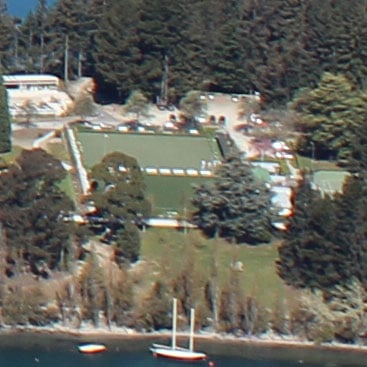 | |
f8, 100 ISO | f8, 100 ISO | |
 | 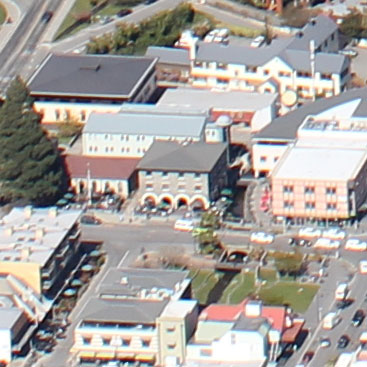 | |
f8, 100 ISO | f8, 100 ISO |
Sony Alpha SLT-A33 vs Canon EOS 550D / Rebel T2i High ISO Noise (auto contrast and DR modes disabled)
Sony Alpha SLT-A33 results : Real-life resolution / High ISO Noise / Handheld Twilight (HHT) / Multi-frame NR / HDR
Sony Alpha SLT-A33 results : Real-life resolution / High ISO Noise / Handheld Twilight (HHT) / Multi-frame NR / HDR
|
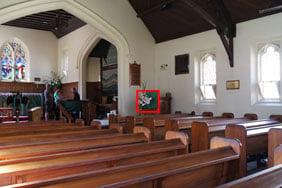 | To compare noise levels under real-life conditions we shot this scene with the Sony Alpha SLT-A33 and Canon EOS 550D / T2i within a few moments of each other at each of their ISO settings. Best quality JPEG and default noise reduction settings were used, but auto contrast modes were disabled on each camera.Each camera was fitted with its respective kit lens, set to f8 and adjusted to deliver the same field of view. |
The image above was taken with the Sony Alpha SLT-A33 at 100 ISO using the camera’s metered exposure of 0.8 seconds and the lens set to 22mm f8; the original Large Fine JPEG measured 3.93MB. As found on our outdoor tests, the Canon EOS 550D / T2i metered a slightly longer exposure under the same conditions – in this case, one second at f8 and 100 ISO.
While we matched the image brightness in our outdoor results, we’ve opted to show what each camera captures given exactly the same exposures below. As such we applied -0.3EV compensation to the Canon to match the exposures of the Sony. As you’ll see below, the resulting images from the Canon are a little darker, implying a slightly lower sensitivity than the Sony at the same quoted ISO values. We’d say the Sony enjoys one quarter to one third of an EV greater sensitivity – not bad considering the fixed translucent mirror prevents all the light from striking the sensor.
As always, the crops are taken from the area marked with a red square and reproduced here at 100%. The Canon crops show a slightly smaller area due to the camera’s higher resolution: 18 Megapixels versus 14.2 on the Sony.
Looking at the crops below, the most obvious differences are the Canon being slightly darker (due to a lower actual sensitivity) and opting for a warmer white balance than the Sony. Looking beyond these differences, both cameras share similarly clean images at 100 ISO and similar degrees of real-life detail, despite the 4 Megapixel difference. As explained on the previous page, the Canon sensor is held back by the basic EF-S 18-55mm IS kit lens, and fitting something better will allow it to resolve finer detail – but even then the difference in resolved detail between the two cameras isn’t particularly significant.
At 200 ISO there’s very minor evidence of noise textures developing in the backgrounds of each crop, but this is serious pixel-peeping and to all intents and purposes both cameras remain clean at this point. Likewise at 400 ISO, where the textures have become a little more obvious, but again with no real detriment to the images as a whole.
With the sensitivity increased to 800 ISO, both cameras are beginning to suffer a little with increased noise artefacts and a slight decrease in saturation. Despite this though, both images remain fairly respectable and very usable.
1600 ISO is where the noise becomes really obvious on both samples with graininess across the image, a further reduction in saturation and the finest details ironed-out by noise reduction. This story worsens as the sensitivity increases with 3200 and 6400 ISO only really suitable for small reproductions and 12,800 ISO best-avoided unless you’re really stuck.
The interesting thing about this comparison is the similarity between the two models in terms of resolved detail, noise levels and artefacts. Throughout their sensitivity ranges the crops actually look quite similar. Of course there’s the small differences in brightness and white balance mentioned at the start, but match these and they’re quite close in overall style and noise characteristics.
So anyone hoping for lower noise levels from a sensor with four fewer Megapixels may be a little disappointed, although as mentioned earlier, we found the A33 was approximately one quarter to one third of an EV more sensitive than the Canon EOS 550D / T2i at the same quoted sensitivities – which isn’t bad considering the translucent mirror prevents some of the light from striking the sensors. Equally, anyone expecting the 18 Megapixels of the Canon to resolve significantly more detail than the 14 Megapixel Sony will also be let down, unless they’re willing to invest in a superior lens.
This is where the story would end for most cameras, but the SLT-A33 boasts a number of additional modes designed to lower noise or increase the dynamic range by automatically combining a number of shots in-camera. These modes are what make the SLT-A33 and similar Sony cameras so special, so we’re giving them the recognition they deserve by devoting a whole page of results to each.
We’ll start by taking a closer look at the Sony Alpha SLT-A33’s Handheld Twilight mode.
Alternatively if you’ve already seen enough, head on over to our Sony Alpha SLT-A33 Sample Images Gallery for more examples across its sensitivity range, or head straight over to our verdict!
Sony Alpha SLT-A33 (JPEG using in-camera defaults) with Sony SAL1855 SAM | Canon EOS 550D / T2i (JPEG using in-camera defaults) with Canon EF-S 18-55mm IS | |
 |  | |
100 ISO | 100 ISO | |
 |  | |
200 ISO | 200 ISO | |
 |  | |
400 ISO | 400 ISO | |
 |  | |
800 ISO | 800 ISO | |
 |  | |
1600 ISO | 1600 ISO | |
 |  | |
3200 ISO | 3200 ISO | |
 |  | |
6400 ISO | 6400 ISO | |
 |  | |
12800 ISO | H (12800 ISO) |
Sony Alpha SLT-A33: Handheld Twilight mode versus Aperture Priority (at 500 / 400 ISO)
Sony Alpha SLT-A33 results : Real-life resolution / High ISO Noise / Handheld Twilight (HHT) / Multi-frame NR / HDR
Sony Alpha SLT-A33 results : Real-life resolution / High ISO Noise / Handheld Twilight (HHT) / Multi-frame NR / HDR
|
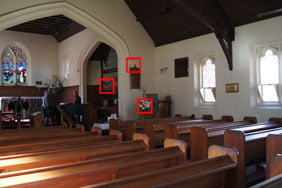 | The Alpha SLT-A33 inherits the Handheld Twilight mode from recent Sony cameras. This fires-off six frames in quick succession and stacks them into a single image in an attempt to lower noise levels.On this page we’ve put the SLT-A33’s Handheld Twilight mode to the test. This automatically selects the sensitivity so we’ve compared it against the closest manual ISO setting in traditional modes. |
The image above was taken with the Sony Alpha SLT-A33 using its Handheld Twilight (HHT) mode. The camera automatically selected an exposure of f4 / 1/40 and a sensitivity of 500 ISO; the original file measured 3.31MB. Since the PASM modes on the A33 only allow single stop sensitivity increments, we selected the closest setting of 400 ISO for our comparison below. We matched the aperture of f4 in Aperture Priority, although the A33 selected a shutter speed of 1/20 to go with it – this is one stop difference in shutter speed from the HHT mode, despite a smaller sensitivity difference of just 1/3 EV.
With an exposure that’s effectively 2/3 of a stop longer (once sensitivity is taken into account), it’s not surprising to find the Aperture Priority sample a little brighter than the one delivered automatically in HHT mode. You may also think that the Aperture Priority sample at 400 ISO would have almost insignificant noise levels, but look closely and you’ll see the tell-tale textures in the background, along with slightly rough edges around details.
In contrast the HHT crops are bereft of noise with a very smooth finish. This smoothness initially gives the impression of noise reduction, but look closely and both sample contain roughly the same amount of detail – it’s just that the HHT version essentially has no noise to speak of, while also avoiding the rough edges of the normal sample.
This is an impressive start for the A33’s HHT mode. You may have expected it to only really deliver a benefit at higher sensitivities, but even compared to the camera shooting at 400 ISO, it’s delivered a preferable result – and lest we forget it also did so with a slightly higher sensitivity, allowing a quicker shutter speed to better avoid camera shake. Like previous tests with HHT, it may have arguably under-exposed a tad, but it remains a valuable ally in low light.
The only downside to HHT is that it’s fully automatic. This may annoy enthusiasts who prefer greater control over the settings – after all, HHT may reduce noise levels, but it’s like you’re shooting in Auto mode. New to the Sony Alpha SLT-A33 over previous models is Multi-frame Noise Reduction, which can be selected for any sensitivity in any standard mode, while also extending the range to 25,600 ISO. It’s certainly exciting stuff, and you can see it in action in our Sony Alpha SLT-A33 Multi Frame Noise Reduction results page.
Alternatively if you’ve already seen enough, head on over to our Sony Alpha SLT-A33 Sample Images Gallery for more examples across its sensitivity range, or head straight over to our verdict!
Sony Alpha SLT-A33: Handheld Twilight mode at 500 ISO | ||||
 |  |  | ||
f4, 1/40, 500 ISO | f4, 1/40, 500 ISO | f4, 1/40, 500 ISO | ||
Sony Alpha SLT-A33: Aperture Priority at 400 ISO | ||||
 |  |  | ||
f4, 1/20, 400 ISO | f4, 1/20, 400 ISO | f4, 1/20, 400 ISO | ||
Sony Alpha SLT-A33: Handheld Twilight mode versus Aperture Priority mode (at 1000 / 800 ISO)
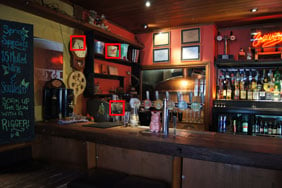 | |
|---|---|
In this second example we’ve moved to the bar-setting seen in our Sample Images pages to see how Handheld Twilight mode copes with a common low-light situation.
The image on the left was taken with the Sony Alpha SLT-A33 using its Handheld Twilight mode. The camera automatically selected an exposure of f3.5 / 1/30 and a sensitivity of 1000 ISO; the original file measured 4.18MB. Since the PASM modes on the A33 only allow single stop sensitivity increments, we selected the closest setting of 800 ISO in Program mode, with the camera choosing an exposure of f5 / 1/15. As above, this represents another slight under-exposure from HHT in comparison to shooting normally in the PAS modes.
The crops below tell a similar story to our first example. Putting aside the minor difference in brightness, the HHT mode has delivered a very smooth result, eliminating the rough edges and noise textures of the single exposure. In contrast, the shot taken in Program mode with a fixed sensitivity of 800 ISO is quite patchy in areas – it’s not at all bad, but the HHT version is much preferred, and again the HHT version was actually taken with a slightly higher sensitivity.
As we’ve seen on previous reviews, Sony’s Handheld Twilight mode effectively reduces noise without compromising detail. As such we consider it not just a highly valuable facility to have at your disposal, but pretty much a no-brainer to use at higher sensitivities for static subjects.
As mentioned above, the only downside to HHT is its fully automatic operation, with the camera selecting the sensitivity, shutter speed and aperture as it sees fit. Enthusiasts will have to let go of all exposure control with HHT mode, but the SLT-A33 now offers an alternative. Each of its sensitivities, including an extended option of 25,600 ISO, can be selected with Multi-frame Noise Reduction, which like HHT mode, combines multiple exposures to reduce noise. The difference is you can choose the sensitivity it’s applied to, along with setting the exposure. It’s certainly exciting stuff, and you can see it in action in our Sony Alpha SLT-A33 Multi Frame Noise Reduction results page.
Alternatively if you’ve already seen enough, head on over to our Sony Alpha SLT-A33 Sample Images Gallery for more examples across its sensitivity range, or head straight over to our verdict!
Sony Alpha SLT-A33: Handheld Twilight mode at 1000 ISO | ||||
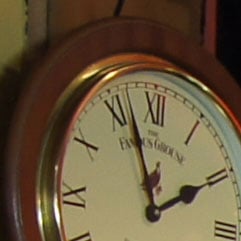 | 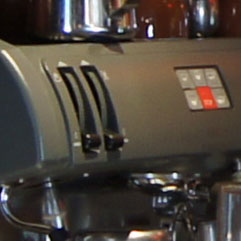 | 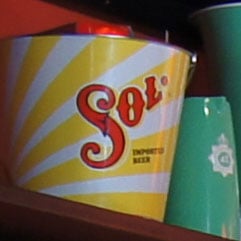 | ||
f3.5, 1/30, 1000 ISO | f3.5, 1/30, 1000 ISO | f3.5, 1/30, 1000 ISO | ||
Sony Alpha SLT-A33: Aperture Priority at 800 ISO | ||||
 | 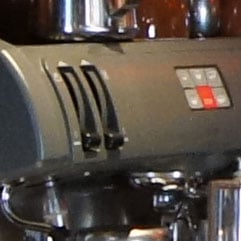 | 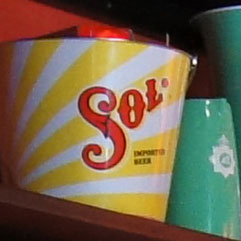 | ||
f5, 1/15, 800 ISO | f5, 1/15, 800 ISO | f5, 1/15, 800 ISO | ||
Sony Alpha SLT-A33 High ISO Noise (normal vs Multi-Frame Noise Reduction)
Sony Alpha SLT-A33 results : Real-life resolution / High ISO Noise / Handheld Twilight (HHT) / Multi-frame NR / HDR
Sony Alpha SLT-A33 results : Real-life resolution / High ISO Noise / Handheld Twilight (HHT) / Multi-frame NR / HDR
|
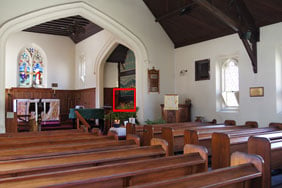 | The Alpha SLT-A33 features a new Multi Frame Noise Reduction mode, which like Handheld Twilight, fires-off six frames in quick succession and stacks them into a single image in an attempt to lower noise levels. The big difference though is Multi Frame Noise Reduction can be applied at any sensitivity (including a new 25,600 ISO setting) and in any of the PASM modes.On this page we’ve put it to the test, comparing it against the normal single-frame ISO settings. |
The image above was taken with the Sony Alpha SLT-A33 at 100 ISO using the camera’s metered exposure of 0.5 seconds and the lens set to 22mm f5.6; the original Large Fine JPEG measured 3.87MB. The Multi Frame Noise Reduction versions shared exactly the same exposure. Note the results below were taken during a second test period with the SLT-A33, which allowed us to compare it against the Panasonic Lumix DMC-GH2 – see how the two cameras compare in our Panasonic Lumix GH2 results.
At 100 ISO, the SLT-A33 already delivers clean results with a single frame, making Multi Frame Noise Reduction at this sensitivity slightly redundant. Most would also agree the single frame taken at 200 ISO looks pretty good, but comparing it side-by-side with the Multi Frame Noise Reduction version reveals very subtle noise textures on the former, most obviously on the organ pipes. It’s nothing to worry about at this point, but it is revealing to see a difference already, however minor.
At 400 ISO, the difference between the crops becomes more apparent. The single frame sample at 400 ISO remains respectable, but the noise textures on the organ pipes, not to mention around the foliage have become more obvious. In comparison, the Multi Frame Noise Reduction version appears bereft of these textures.
As the sensitivity increases, the differences become more obvious still. At 800 ISO, the single-frame shot is beginning to exhibit noise textures throughout, whereas the Multi Frame Noise Reduction version remains almost entirely clean. This is a great result for the A33 at this point.
With the sensitivity set to 1600 ISO we see the first signs of noise artefacts on the Multi Frame Noise Reduction sample. It’s become noticeably less defined than before, but still enjoys an approximately two stop advantage over the single-frame version in quality.
The noise levels on both versions steadily increase with the sensitivity, and we’d say the gap narrows a little between 3200 and 12800 ISO, but the Multi Frame version remains at least one stop ahead in noise levels.
While the single-frame sensitivity tops-out at 12800 ISO, the Multi Frame options offer a higher setting of 25600 ISO. It certainly isn’t pretty, but again is as good as the 12800 ISO sample from the single frame mode.
Overall, this is an excellent result for the SLT-A33. The Handheld Twilight mode gave us a tantalising glimpse into stacking frames for cleaner results, but annoyingly only offered it with automatic exposures and sensitivity. Now Multi Frame Noise Reduction lets you choose the ISO value and apply it in any of the PASM modes for total control over exposure.
The results here speak for themselves, with the Multi Frame Noise Reduction versions enjoying at least a one stop advantage over the single-frame shots, and for much of the range nearer to two stops. Obviously the technique of combining multiple frames only applies when the subject remains static (and the sound of a six-frame burst won’t disturb), but in those situations, you’d be crazy not to select it on the A33. It more than makes up for the loss of sensitivity from the semi-reflective mirror and throws down the gauntlet to rival manufacturers. We certainly hope to see it deployed on all Sony models in the future.
Now it’s time to check out our Sony A33 High Dynamic Range results page. Alternatively if you’ve already seen enough, head on over to our Sony Alpha SLT-A33 Sample Images Gallery for more examples across its sensitivity range, or head straight over to our verdict!
Sony Alpha SLT-A33 (JPEG using in-camera defaults) with Sony SAL1855 SAM | Sony Alpha SLT-A33 (Multi-frame Noise Reduction) with Sony SAL1855 SAM | |
 |  | |
100 ISO | 100 ISO | |
 |  | |
200 ISO | 200 ISO | |
 |  | |
400 ISO | 400 ISO | |
 |  | |
800 ISO | 800 ISO | |
 |  | |
1600 ISO | 1600 ISO | |
 |  | |
3200 ISO | 3200 ISO | |
 |  | |
6400 ISO | 6400 ISO | |
 |  | |
12800 ISO | 12800 ISO | |
 | ||
25600 ISO not available | 25600 ISO |
Sony Alpha SLT-A33: High Dynamic Range comparison
Sony Alpha SLT-A33 results : Real-life resolution / High ISO Noise / Handheld Twilight (HHT) / Multi-frame NR / HDR
Sony Alpha SLT-A33 results : Real-life resolution / High ISO Noise / Handheld Twilight (HHT) / Multi-frame NR / HDR
 | |
|---|---|
The Alpha SLT-A33 inherits the in-camera High Dynamic Range (HDR) capabilities of recent Sony cameras. This fires-off three frames at a choice of exposure increments, then automatically combines them into a single image with increased dynamic range – great for protecting detail in highlights and shadows, and like the camera’s other cunning modes can be used handheld.
By default, the A33 chooses the exposure increment for you in Auto HDR mode, you can alternatively select exposure increments of 1 to 6EV in single EV steps; that’s a huge range and while HDR aficionados may have preferred an additional option to shoot more than three frames (or have broader bracketing options for HDR assembly on their computers), it remains a very powerful feature to find in-camera.
To put the capability to the test we photographed our High ISO Noise composition first with HDR and DRO disabled, then at each of the HDR increments from 1 to 6EV. To illustrate exactly what’s going on, we’ve included a histogram below each image.
Each of these exposures was taken with zero compensation, but Sony regulars will know there can be benefits to metering for the highlights in order to protect them. So our final two examples show the A33 with -2EV compensation applied, first with HDR and DRO disabled, and secondly with HDR manually set to 6EV. Obviously -2EV compensation and the maximum HDR increment are extreme examples, but they illustrate what’s possible.
Next head on over to our Sony Alpha SLT-A33 Sample Images Gallery for more examples across its sensitivity range, or head straight over to our verdict!
| Sony Alpha SLT-A33: DRO / HDR disabled
Sony Alpha SLT-A33: HDR 1EV
Sony Alpha SLT-A33: HDR 2EV
Sony Alpha SLT-A33: HDR 3EV
Sony Alpha SLT-A33: HDR 4EV
Sony Alpha SLT-A33: HDR 5EV
Sony Alpha SLT-A33: HDR 6EV
Sony Alpha SLT-A33: DRO / HDR disabled, -2EV compensation
Sony Alpha SLT-A33: HDR 6EV, -2EV compensation
| ||||||||||||||||||||||||||||||||||||||||||||||||||||||||||||||||||||||||||||||||






















